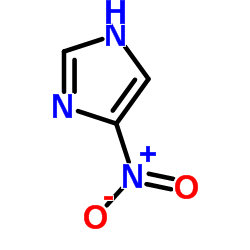A new-generation 5-nitroimidazole can induce highly metronidazole-resistantGiardia lambliain vitro
Linda A. Dunn, Anita G. Burgess, Kenia G. Krauer, Lars Eckmann, Patrice Vanelle, Maxime D. Crozet, Frances D. Gillin, Peter Upcroft, Jacqueline A. Upcroft
文献索引:Int. J. Antimicrob. Agents 36(1) , 37-42, (2010)
全文:HTML全文
摘要
The 5-nitroimidazole (NI) compound C17, with a side chain carrying a remote phenyl group in the 2-position of the imidazole ring, is at least 14-fold more active against the gut protozoan parasite Giardia lamblia than the 5-NI drug metronidazole (MTR), with a side chain in the 1-position of the imidazole ring, which is the primary drug for the treatment of giardiasis. Over 10 months, lines resistant to C17 were induced in vitro and were at least 12-fold more resistant to C17 than the parent strains. However, these lines had ID 90 values (concentration of drug at which 10% of control parasite ATP levels are detected) for MTR of >200 μM, whilst lines induced to be highly resistant to MTR in vitro have maximum ID 90 values around 100 μM (MTR-susceptible isolates typically have an ID 90 of 5–12.8 μM). The mechanism of MTR activation in Giardia apparently involves reduction to toxic radicals by the activity of pyruvate:ferredoxin oxidoreductase (PFOR) and the electron acceptor ferredoxin. MTR-resistant Giardia have decreased PFOR activity, which is consistent with decreased activation of MTR in these lines, but C17-resistant lines have normal levels of PFOR. Therefore, an alternative mechanism of resistance in Giardia must account for these super-MTR-resistant cells.
相关化合物
| 结构式 | 名称/CAS号 | 分子式 | 全部文献 |
|---|---|---|---|
 |
4-硝基咪唑
CAS:3034-38-6 |
C3H3N3O2 |
|
Binding of imidazole, 1-methylimidazole and 4-nitroimidazole...
2015-08-01 [Biochim. Biophys. Acta 1854 , 869-81, (2015)] |
|
Apolar distal pocket mutants of yeast cytochrome c peroxidas...
2015-08-01 [Biochim. Biophys. Acta 1854 , 919-29, (2015)] |
|
Analysis of four 5-nitroimidazoles and their corresponding h...
2006-03-22 [J. Agric. Food Chem. 54(6) , 2018-26, (2006)] |
|
Synthesis of some N-substituted nitroimidazole derivatives a...
2009-02-01 [Eur. J. Med. Chem. 44 , 645-52, (2009)] |
|
New synthesis and antiparasitic activity of model 5-aryl-1-m...
2009-01-01 [Molecules 14(8) , 2758-67, (2009)] |